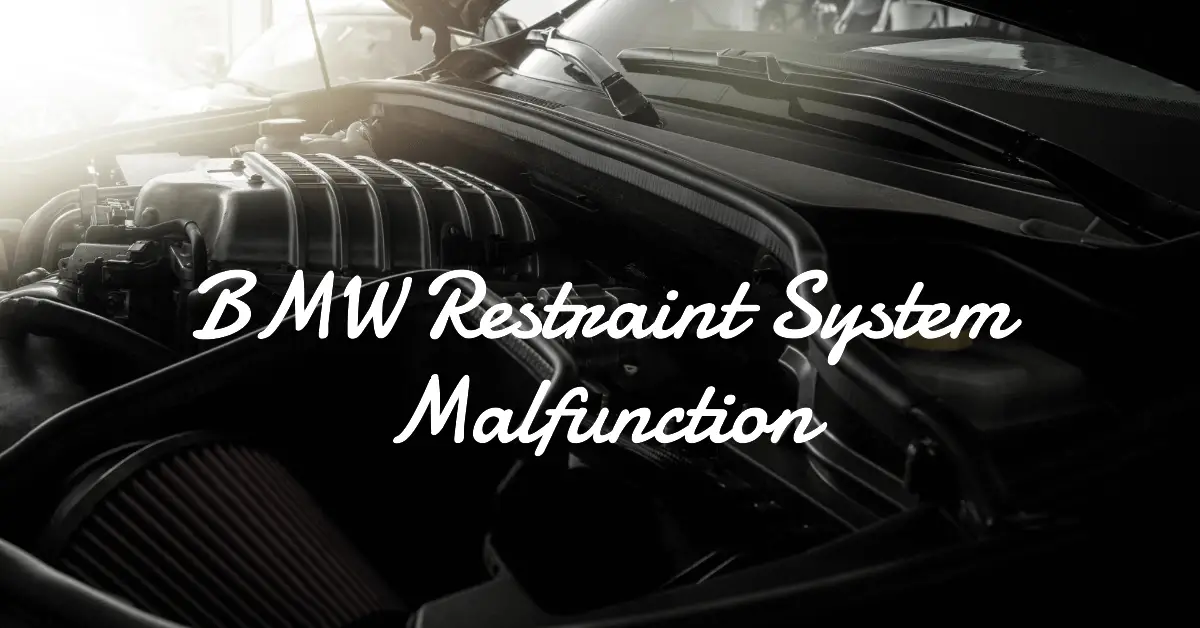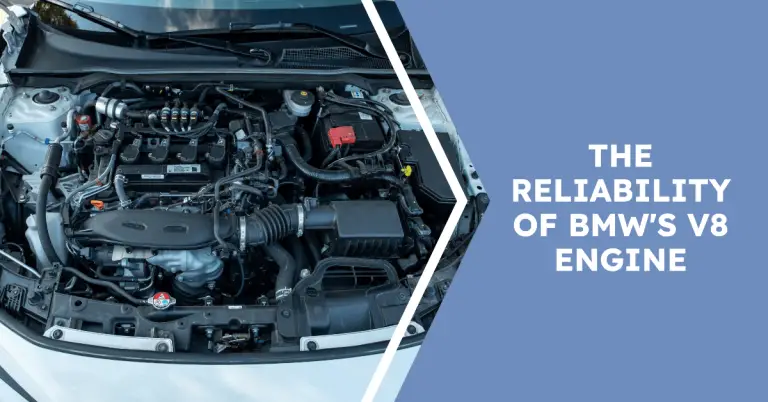Restraint System Malfunction in BMW: Causes and Solutions
Finding the dreaded “Restraint System Malfunction” warning light illuminated in your BMW can be worrying. What does this common BMW error mean and what should you do about it? In short, it indicates an issue detected with your BMW’s seat belts, airbags or other safety components. While not necessarily dangerous to drive with, it’s critical to diagnose and repair restraint system problems promptly to ensure proper function.
This comprehensive guide will explore all aspects of BMW restraint system faults:
- What triggers the warning light
- Where issues tend to occur
- Diagnostic tips and error codes
- DIY fixes and when to seek pro help
- Maintenance to prevent problems
- Key takeaways on resolving restraint system problems
Let’s start by understanding what systems are monitored and the types of issues that can cause this error.
What Triggers the Restraint System Warning Light?
Modern BMW models have sophisticated restraint systems consisting of airbags, seat belt pre-tensioners, buckles, wiring harnesses and control modules. The restraint system warning light on your instrument cluster will illuminate if the on-board diagnostics detect a fault in any part of this safety system.
Here are some of the most common triggers for the “Restraint System Malfunction” warning:
Faulty Seat Belt Buckle Switch
The buckle switches detect whether seat belts are fastened in each seating position. Damaged, corroded or faulty buckle switches can cause erroneous fault codes and the warning light.
Airbag System Faults
Problems with airbag squibs, sensors or wiring connectivity can also trigger general restraint system faults. Airbag issues require immediate attention for safety.
Loose Connector or Wiring
Like any electrical system, degraded or loose connectors and damaged wires in the restraint wiring harnesses can cause functionality problems. Connector corrosion is common from cabin moisture.
As you can see, there are a variety of potential issues that can manifest as a generic “restraint malfunction” warning. To properly diagnose and repair, we need to understand where these faults tend to occur.
Common Places the Fault Occurs
Since the restraint system comprises various components networked together, finding the root cause takes hands-on troubleshooting. Here are some common areas where restraint system faults originate:
Under the Front Seats
The seat belt buckle switches and pre-tensioner wiring are located under the front seats, exposed to dirt and moisture from passengers’ feet. Inspect connectors and wires in this area first for visible damage.
Near the Seatbelt Buckles
Faulty seatbelt buckle switches account for many of these warnings. Check the connectors at the buckle ends for corrosion or loose pins. Spray with electrical contact cleaner and reconnect firmly.
Behind Interior Panels
The airbag control modules and other restraint system electronics interface are mounted behind interior trim panels. Inspect for any obviously damaged or disconnected wiring.
Now that we know the problem areas to check, let’s go over some tips for diagnosing the specific issue on your BMW.
Diagnosing the Issue
Diagnosing restraint system problems starts by pulling the fault codes from the airbag/SRS module. This will point you in the right direction before inspecting components.
Use BMW Diagnostic Tool to Pinpoint Codes
A BMW scan tool that interfaces with the airbag module can read any stored DTCs (diagnostic trouble codes) and live data. This is the quickest way to get insight on the fault.
Inspect Connectors and Wires for Damage
Visually check all connectors and harnesses related to the restraints. Look for corrosion, loose pins, damaged wires or connectors not fully seated.
Test Individual Components Like Buckle Switch
Based on fault codes, you may need to electrically test components like seat belt buckle switches, crash sensors and internal module signals.
Diagnosing down to the root cause takes patience and diligence. But in many cases, you can make DIY repairs to get the restraint system back up and running properly.
DIY Repairs and Solutions
Many “restraint system malfunction” warnings come down to loose or damaged wiring and connectors. Here are some DIY steps to try before paying big shop repair bills:
Replace Damaged Wires and Connectors
Carefully repair any visibly damaged or corroded wires going to restraint components. Spray out connectors with electrical cleaner and reconnect.
Reset Fault Codes and Retest System
Once any repairs are made, reset the SRS fault memories using a BMW scan tool. Then drive the car and see if errors return.
Swap Out Faulty Seat Belt Buckle Switch
If you get buckle switch error codes, replace the faulty switch relatively easy DIY fix. Just release belt tension, disconnect and swap in new switch.
With minimal wiring repairs, code resets, and minor part replacements, you can often resolve common BMW restraint system faults yourself. But in some cases, it does require professional diagnosis and repair.
When to Seek Professional Help?
While the DIY steps above can fix many issues, restraint system problems can also stem from complex electrical gremlins in the module programming or sensors. Seek qualified help for:
- If DIY fixes don’t solve the problem
- For airbag system diagnosis and repair
- If error codes indicate complex electrical issues
The airbag control modules require special software and programming expertise. Never try to remove or replace airbag components yourself. The high voltages involved can injure or kill improperly trained technicians.
Seek professional diagnosis if you’ve exhausted basic troubleshooting or feel the root cause is beyond your skill level. And never ignore an active restraint system warning light, as your safety depends on it!
Okay, with the right knowledge and help when required, you can get your BMW’s restraint system back in good working order. But it’s also important to maintain these components properly.
Maintaining Your BMW Restraint System
Like any vehicle system, taking preventative measures helps minimize problems down the road. Here are some tips for maintaining your BMW’s seat belts, airbags and restraint electronics:
- Check belts and buckles regularly for damage – replace as needed
- Keep interior clean to prevent connector corrosion from wet footwear
- Address any restraint system error codes promptly to prevent escalating issues
- Consider having airbag system inspected by BMW technician at major mileage intervals
Proactively checking for issues and fixing problems early is vital for the safety of you and your passengers. A fully operational restraint system can literally be a lifesaver in a crash.
BMW Restraint System Malfunction – Key Takeaways
Dealing with your BMW’s common “Restraint System Malfunction” warning comes down to a few key steps:
- Understand it’s caused by component faults, loose wiring or corrosion
- Inspect connectors, wires, switches and sensors methodically
- Seek professional BMW help for complex electrical diagnosis/repair
- Maintain cleanliness and regularly inspect belts and buckles
While disconcerting, this error light is manageable with careful troubleshooting. Refer to your BMW’s service manual for detailed diagnostics tips. And don’t ignore – get restraint system problems fixed promptly!
We’ve covered all the key aspects around these common BMW issues. With diligent maintenance and quick response to warnings, you can keep your BMW’s safety restraint system functioning properly for peace of mind in every drive.







